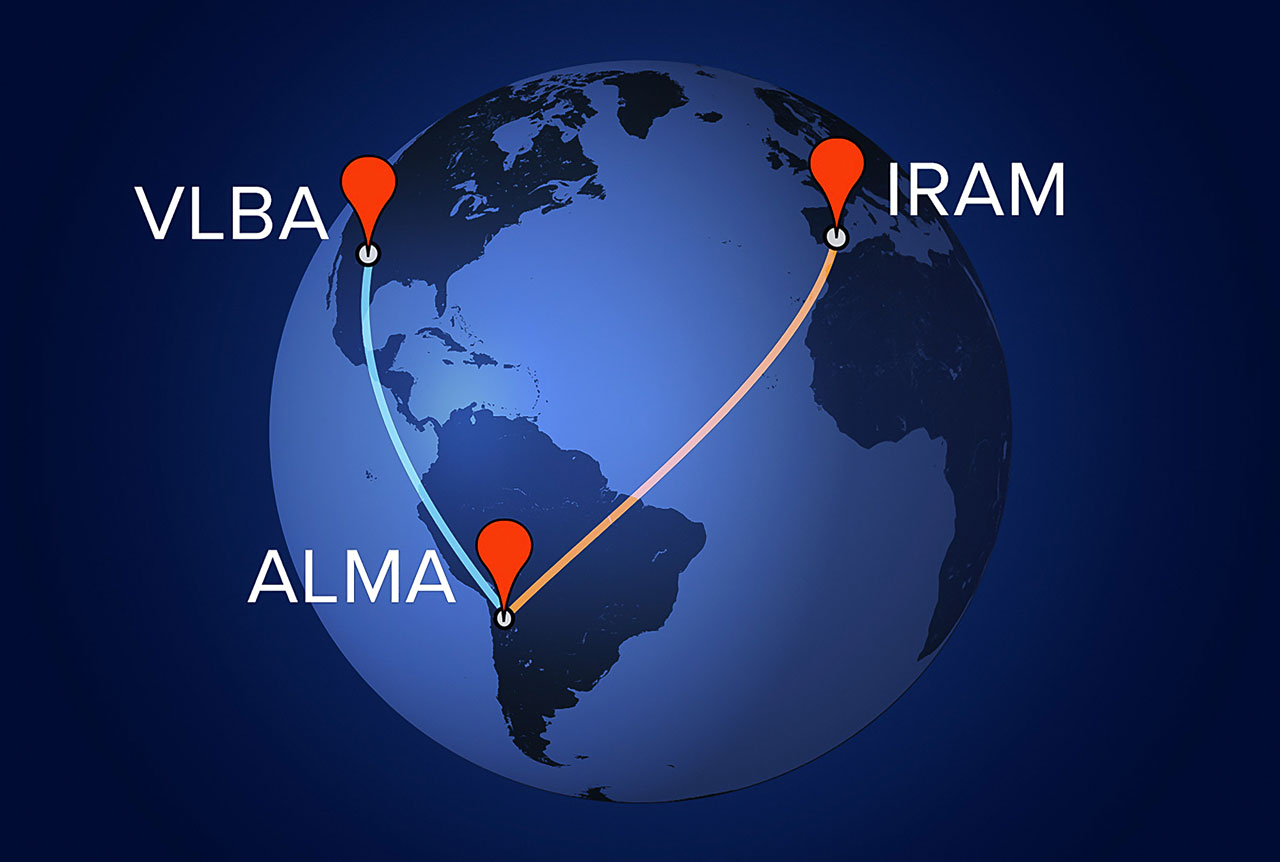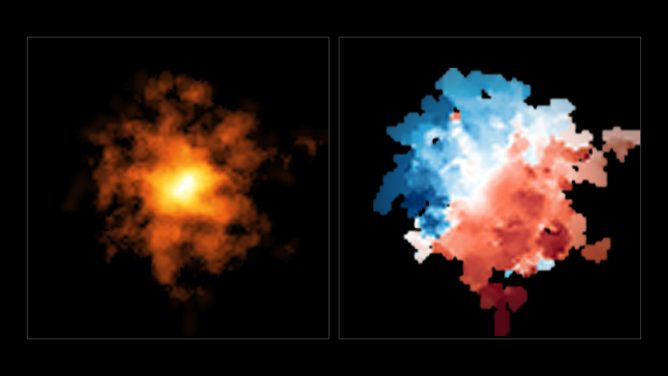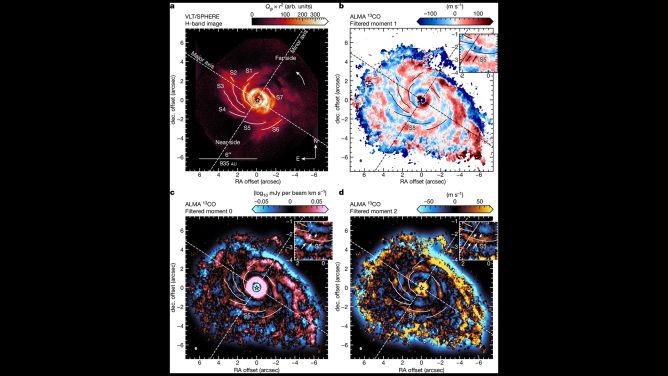The Atacama Large Millimeter/submillimeter Array (ALMA) continues to expand its power and capabilities by linking with other millimeter-wavelength telescopes in Europe and North American in a series of very long baseline interferometry (VLBI) observations.
In VLBI, data from two or more telescopes are combined to form a single virtual telescope that spans the geographic distance between them. The most recent of these experiments with ALMA formed an Earth-size telescope with extraordinarily fine resolution.
These experiments are an essential step in including ALMA in the Event Horizon Telescope (EHT), a global network of millimeter-wavelength telescopes that will have the power to study the supermassive black hole at the center of the Milky Way in unprecedented detail.
Before ALMA could participate in VLBI observations, it first had to be upgraded adding a new capability known as a phased array [1]. This new version of ALMA allows its 66 antennas to function as a single radio dish 85 meters in diameter, which then becomes one element in a much larger VLBI telescope.
The first test of ALMA’s VLBI capabilities occurred on 13 January 2015, when ALMA successfully linked with the Atacama Pathfinder Experiment Telescope (APEX), which is about two kilometers from the center of the ALMA array.
On 30 March 2015, ALMA reached out much further by linking with the Institut de Radioastronomie Millimetrique’s (IRAM) 30-meter radio telescope in the Sierra Nevada of southern Spain. Together they simultaneously observed [2] the bright quasar 3C 273. Data from this observation were combined into a single observation with a resolution of 34 microarcseconds. This is equivalent to distinguish an object of less than ten centimeters on the Moon, seen from Earth.
The most recent VLBI observing run was performed on 1-3 August 2015 with six of the National Radio Astronomy Observatory’s (NRAO) Very Long Baseline Array (VLBA) antennas [3]. This combined instrument formed a virtual Earth-size telescope and observed the quasar 3C 454.3, which is one of the brightest radio beacons on the sky, despite lying at a distance of 7.8 billion light-years. These data were first processed at NRAO and MIT-Haystack in the United States and further post-processing analysis is being performed at the Max Planck Institute for Radio Astronomy (MPIfR) in Bonn, Germany.
The new observations are a further step towards global interferometric observations with ALMA in the framework of the Global mm-VLBI Array and the Event Horizon Telescope, with ALMA as the largest and the most sensitive element. The addition of ALMA to millimeter VLBI will boost the imaging sensitivity and capabilities of the existing VLBI arrays by an order of magnitude.
Notes
[1] The following groups and institutions participated in the ALMA Phasing Project: National Radio Astronomy Observatory, Academia Sinica Institute of Astronomy and Astrophysics, National Astronomical Observatory of Japan, Smithsonian Astrophysical Observatory, MIT Haystack, MPIfR-Bonn, Onsala Space Observatory, University de Concepcion in Chile, and the Joint ALMA Observatory.
[2] The March observations were made during an observing campaign of the EHT at a wavelength of 1.3 mm.
[3] The VLBA is an array of 10 antennas spread across the United States from Hawaii to St. Croix. For this observation, six antennas were used: North Liberty, IA; Fort Davis, TX; Los Alamos, NM; Owens Valley, CA; Brewster, WA; and Mauna Kea, HI. The observing wavelength was 3 mm.
Credit: A. Angelich (NRAO/AUI/NSF)










